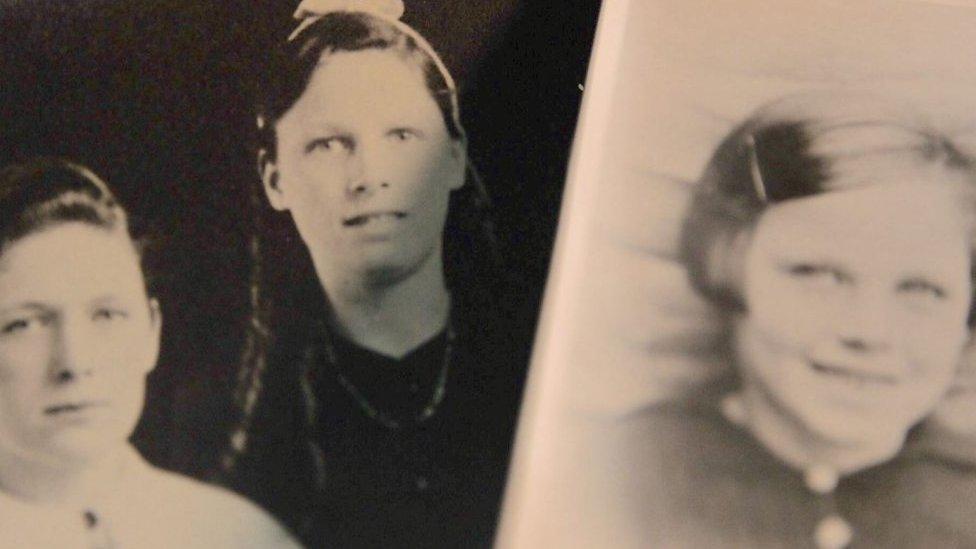Kathleen Folbigg: Could science free Australian jailed for killing babies?
- Published
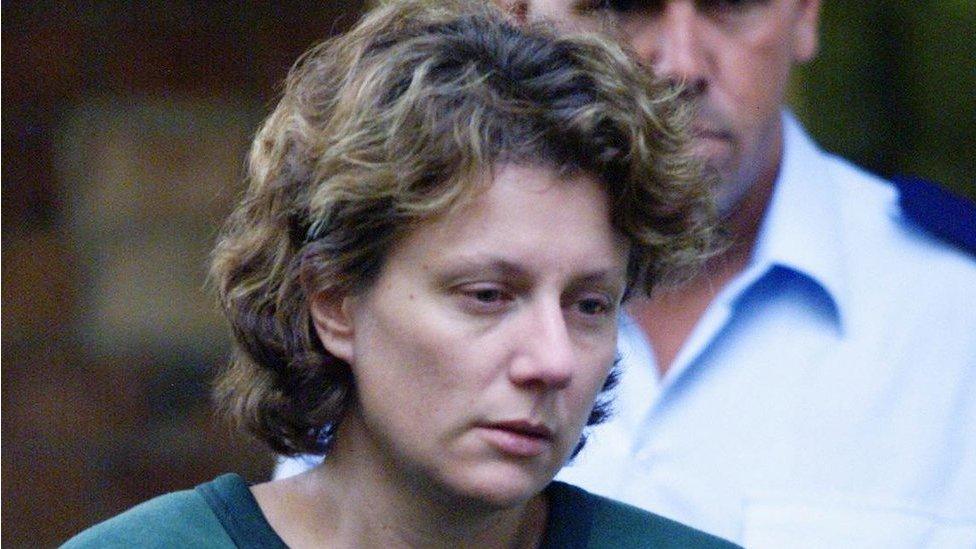
Kathleen Folbigg, pictured after a court hearing in 2004
Imagine for a moment what it must feel like if, as a mother, you give birth to four children, one after another, each of whom, as infants, dies from natural causes over a 10-year period.
Then imagine being wrongly accused of smothering them all and being sentenced to 30 years in jail for four terrible crimes you did not commit.
That narrative is emerging as potentially the true story of Kathleen Folbigg, an Australian mother from the Hunter Valley region of New South Wales (NSW).
Branded at her trial in 2003 as "Australia's worst female serial killer", Folbigg has already spent nearly 18 years in prison after being found guilty of the manslaughter of her firstborn Caleb, and the murder of her three subsequent children, Patrick, Sarah and Laura.
But now, fresh scientific evidence is turning this case on its head.
Last week a petition signed by 90 eminent scientists, science advocates and medical experts was handed to the Governor of NSW, requesting a pardon for Folbigg and her immediate release.
Among the signatories were two Nobel laureates and two Australians of the Year, a former chief scientist, and the president of the Australian Academy of Science, Professor John Shine, who commented: "Given the scientific and medical evidence that now exists in this case, signing this petition was the right thing to do."
If Folbigg is freed and her convictions are overturned, her ordeal will be seen as the worst miscarriage of justice in Australia's history - worse even than the case of Lindy Chamberlain, who served three years in prison after being wrongly convicted of murdering her baby, Azaria, at Uluru.
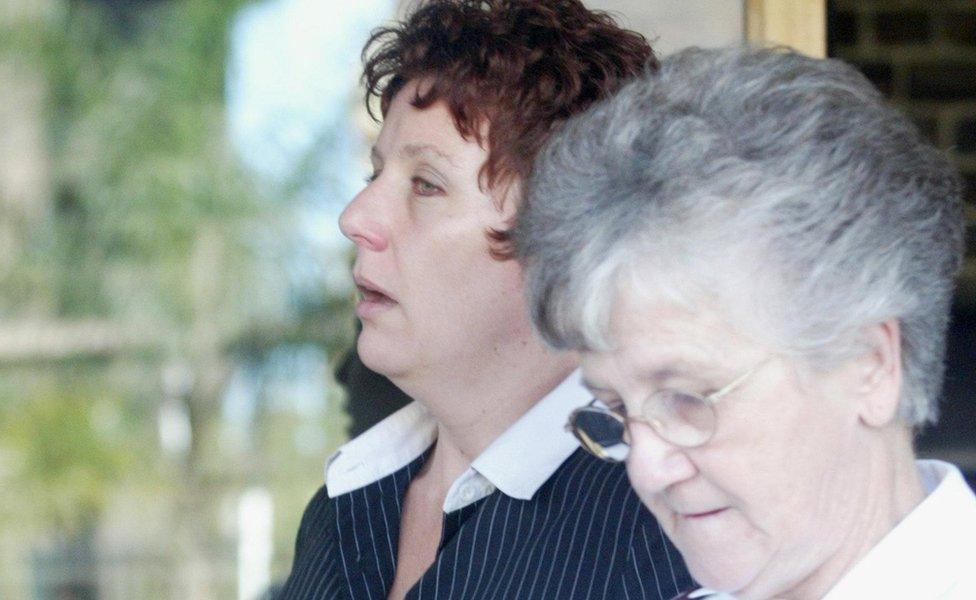
Kathleen Folbigg (left) at her murder trial in 2003
The petition, external exposes a troubling gulf in this case between science and the law.
Over several appeals and a detailed inquiry which re-examined Folbigg's convictions in 2019, Australia's judges have resolutely rejected the notion of reasonable doubt in her case, giving greater weight to the circumstantial evidence presented at her trial, and the ambiguous entries which she made in contemporaneous diaries.
"It remains that the only conclusion reasonably open is that somebody intentionally caused harm to the children, and smothering was the obvious method," said Reginald Blanch, a former judge who led the inquiry. "The evidence pointed to no person other than Ms Folbigg."
The NSW government further assured the public two years ago "that no stone has been left unturned".
But the science, increasingly, points to the conclusion that there must be reasonable doubt about her convictions. "The science in this case is compelling and cannot be ignored," says human geneticist and researcher Professor Jozef Gecz.
Child and public health researcher Professor Fiona Stanley says: "It is deeply concerning that medical and scientific evidence has been ignored, in preference of circumstantial evidence. We now have an alternative explanation for the death of the Folbigg children."
That alternative explanation lies in the recent discovery of a genetic mutation in Kathleen Folbigg and her two daughters which, the scientists say, was "likely pathogenic" and which they believe caused the deaths of the two girls, Sarah and Laura.
A different genetic mutation has been discovered in the two boys, Caleb and Patrick, although the scientists acknowledge that here, further research is needed.

You might also be interested in:

The initial discovery of the two girls' mutant gene, CALM2 G114R, was made in 2019 by a team led by Carola Vinuesa, a professor of immunology and genomic medicine at the Australian National University, and a driving force behind the petition calling for Folbigg's release.
"We found a novel, never-before reported mutation in Sarah and Laura that had been inherited from Kathleen," Professor Vinuesa told the BBC.
"The variant was in a gene called CALM2 (that encodes for calmodulin). Calmodulin variants can cause sudden cardiac death."
In November last year, scientists from Australia, Denmark, France, Italy, Canada and the US reported further findings in the prestigious medical journal, Europace, published by the European Society of Cardiology.
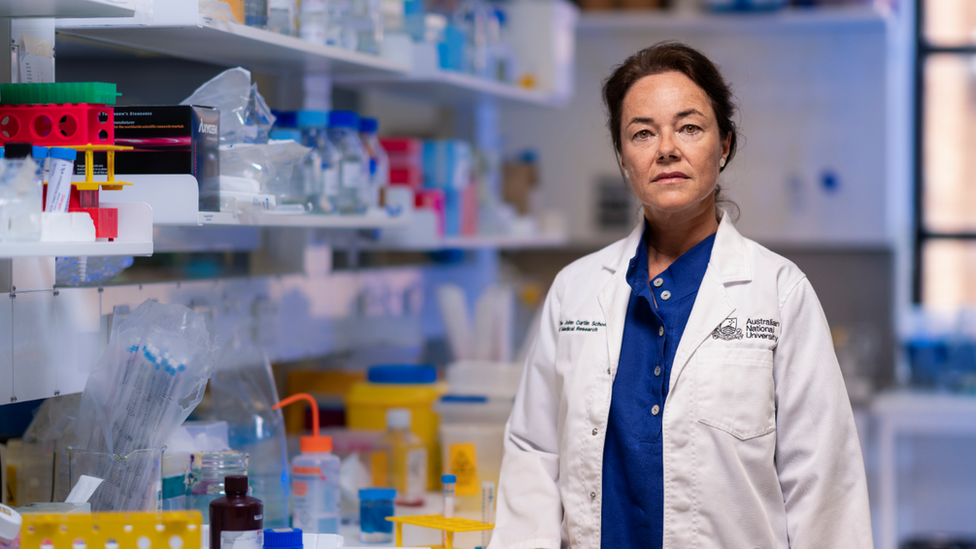
Prof Carola Vinuesa's research led to the discovery of the mutant gene
A team in Denmark, led by Aalborg University Professor Michael Toft Overgaard, conducted experiments designed to test the pathogenicity of the CALM2 variant.
They found that the effects of the Folbigg mutation were as severe as those of other known CALM variants, which regularly cause cardiac arrests and sudden death, including in young children while asleep.
The scientists stated: "We consider the variant likely precipitated the natural deaths of the two female children."
Both girls were suffering from infections before they died, and the scientists suggested that: "A fatal arrhythmic event may have been triggered by their intercurrent infections."
The scientists also reported that Caleb and Patrick each carried two rare variants in BSN, a gene shown to cause early onset lethal epilepsy in mice.
The recent genetic discoveries follow in the footsteps of earlier expert medical opinions which support the theory that all four children died from natural causes.
Professor Stephen Cordner, a Melbourne based forensic pathologist, re-examined the children's autopsies in 2015, concluding that: "There is no positive forensic pathology support for the contention that any or all of these children have been killed." He added: "There are no signs of smothering."
Three years later, in 2018, forensic pathologist, Matthew Orde, Clinical Associate Professor at the University of British Columbia, told the Australian Broadcasting Corporation: "Fundamentally, I'm in agreement with Professor Cordner, in that all four of these child deaths could be explained by natural causes."
Now, as Lindy Chamberlain did before her, Kathleen Folbigg bides her time in jail, awaiting the outcome of the petition and a recent hearing in the NSW Court of Appeal. She continues to protest her innocence.

You may also be interested in:
How a new DNA lead could solve the Little Red Riding Hood murder
Related topics
- Published28 April 2014
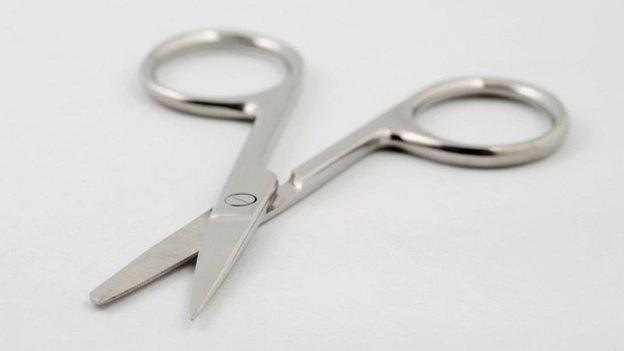
- Published1 May 2019
